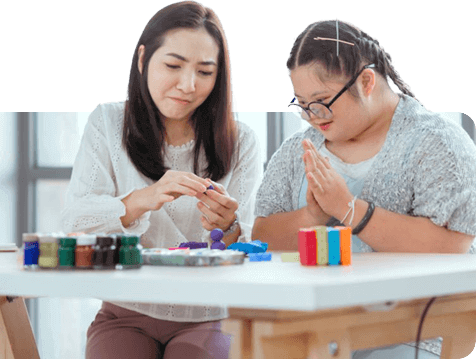Our services are tailored, with love & care, to meet your unique living experience.
Contact us to start your Rosie’s Love and Care journey.
What is ADHD?
Attention deficit hyperactivity disorder (ADHD or ADD in the past) is one of the most common disorders among Australians. It can usually be dialogised early and often lasts to adulthood. There are three types of ADHD can be recognized:
Predominantly Inattentive: Inattentive, easily to be distracted, unable to follow instructions or finish a task
Predominantly Hyperactive-Impulsive: Unable to sit still, has difficulty engaging in quiet activities, interrupts others, and has difficulty taking turns and following instructions.
Combination of the two above
Common signs of ADHD
ADHD can be misunderstood with many normal developmental behaviours. It is normal for children to constantly seek activities and be active, however, it happens severely to ADHD children. It is recommended that parents seek professional advice and tests.
Some of the early signs that your child might have ADHD include:
Inattentive:
Struggling to focus in class, reading and conversation
Easily to be distracted
Lack of attention to details
Unable to remember everyday tasks and regular belongings.
Hyperactive:
Fidgeting and squirming
Unable to sit still for a period
Constantly talk a lot.
Having difficulty in waiting for turns.
Being constantly in motion
Having difficulty playing and doing tasks quietly.
What to do then?
If you think your child may have ADHD, it is recommended that you seek professional advice from nurses or doctors to get tests.
It is important to be dialogised with ADHD at early as possible to plan the right treatment. There are two types of treatments are therapy and medication. For young children, the role of parents or caregivers are most important in the treatment journey, thus it is important to work closely with health professionals and participate in training programs to give your child the right support.
Contact us to start your Rosie’s Love and Care journey.
